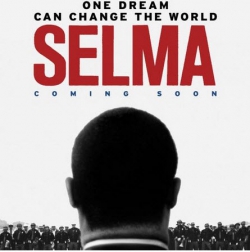Jan
8
2015

Written by Sean Thomas-Breitfeld
This weekend, the movie Selma opens nationwide. The film’s release doesn’t just launch the latest awards-season buzz; it connects directly to the movement moment we’re in, and kicks off a year where we’ll be marking several 50-year milestones that harken back to the movements of the 1960s.
The actual history of movements is always more complicated and messy than the tidy narratives we use to make heroes of mere mortals. So it’s not surprising that the creative license taken by the filmmakers has inspired some fact-checking – especially an essential article by the Zinn Education Project about the 10 things to know before seeing the movie. But, for me, what made this historical drama about the marches for voting rights in Selma, AL so impactful was its relevance to today’s struggles for justice.
One of the film’s early scenes shows Annie Lee Cooper (portrayed by Oprah Winfrey) grappling with an impossible literacy test, and made me think about the Supreme Court weakening of the Voting Rights Act. Selma’s images of police brutally attacking and killing peaceful protesters reminded me of the recent actions in the wake of the police-involved deaths of Eric Garner, Michael Brown, and so many other young men of color. The movie’s uplifting finale, showing the successful 50-mile march from Selma to Montgomery, drove home the point that social change will always require visible public protests … even (or especially) in this era of online activism.
There will be many more times this year when the past will remind us of the present. Next month will mark the 50th anniversary of the assassination of Malcolm X. Nineteen Sixty-Five was the year when Medicare and Medicaid were established, and affirmative action was first called for in an Executive Order on the hiring practices of government contractors. And it was also the year when Sex and Caste: A Kind of Memo was circulated by two former staffers of the Student Nonviolent Coordinating Committee, drawing parallels between the systemic forces of racism and sexism and helping advance the women’s liberation movement.
Fifty years later, it is definitely a different world and progress is undeniable. And it is also clear that the wave of multiple movements that dominated public consciousness in 1965 still hold lessons for the movements of today.
